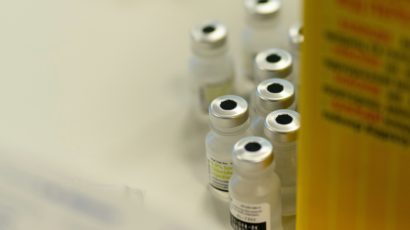Posted by Dr Michelle Wright
January was cervical cancer awareness month in many countries around the world: an opportunity to raise awareness about the fourth most common cancer in women globally, as well as vaccination against Human papillomavirus (or HPV for short), which causes over 95% of cervical cancers. Dr Michelle explains the importance of HPV vaccination and regular cervical screening, as well as WHO’s Global Strategy to reduce cervical cancer rates and associated deaths.
In higher-income countries, cervical cancer screening and HPV vaccination, as well as access to treatment services, has gone a long way to reducing the rates of cervical cancer and its associated mortality. But there do remain inequalities when compared to low and middle-income countries – the highest rates of incidence and mortality of cervical cancer being in sub-Saharan Africa, Central America and South-Esat Asia.
What is the Human Papillomavirus?
Human Papillomavirus is a common sexually transmitted infection affecting the genital area, skin, and throat. Almost all sexually active people are exposed to it at some point. For most people, their immune system clears the infection. But in some, HPV can persist, and if this persistent infection is with high-risk subtypes, it may cause changes in cells which, untreated, can go on to develop into cancer.
The really good news is that HPV vaccination is available, with the idea being that vaccination takes place before a person becomes sexually active – so somewhere between the ages of 9 and 14. Here in Switzerland, HPV vaccination is now offered to both girls and boys between the ages of 11 and 14. But it’s also important to remember that cervical cancer screening is another way of preventing cervical cancer.
Who should be screened for Cervical cancer?
The World Health Organisation recommends cervical cancer screening for all women, as a minimum every 5-10 years, starting at the age of 30. Those living with HIV should be screened from the age of 25, and more regularly, as their risk of cervical cancer is increased.
Screening using a high-performance HPV test is what is endorsed by WHO with a minimum of two lifetime screens – the first by age 35 and the second by age 45. If this test is positive for HPV, a healthcare provider can then check for any abnormal cells or pre-cancerous changes of the cervix.
How is this done?
This checking is usually done by colposcopy – visualising the cervix using a high-powered microscope. And then treatment can be carried out to burn-off, freeze, or remove the abnormal cells. Other things that can help protect against HPV infection (and so again, cervical cancer) are condom use, being a non-smoker, and male circumcision.
WHO have put together a Global strategy to reduce the number of deaths from cervical cancer. There are three targets to be achieved by 2030:
- The first, for 90% of girls to have received the HPV vaccine by age 15.
- The second, for 70% of women to be screened with a high-quality HPV test by ages 35 and 45.
- And the third, to ensure that 90% of women with cervical disease receive the treatment that they need.
If this is achieved, it’s hoped that globally, 62 million deaths because of cervical cancer can be avoided.





